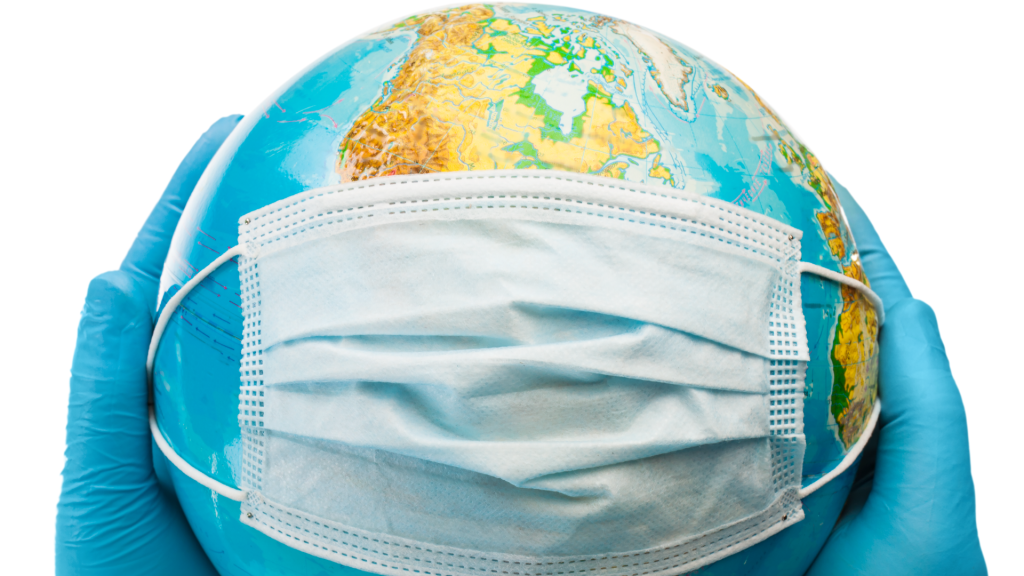How Well Is the World Prepared for the Next Pandemic?
The COVID-19 pandemic exposed the vulnerabilities of our global systems but also demonstrated the power of innovation, resilience, and adaptation. As the world recovers, the question remains: Are we ready for the next pandemic? The answer is complex, as preparedness varies across industries, governments, and communities. While significant strides have been made in technology, healthcare, and crisis management, many gaps still need to be addressed.
1. Lessons from the Past: Industry and Economic Preparedness
Industries worldwide were forced to rapidly adapt when COVID-19 hit. The pandemic disrupted supply chains, shut down businesses, and changed consumer behavior overnight. Some sectors, like e-commerce and digital services, thrived, while others, such as travel and hospitality, suffered massive losses.
● Supply Chain Resilience: The disruptions in global supply chains highlighted the need for diversification. Companies are now focusing on local sourcing, predictive analytics, and automation to reduce reliance on single suppliers.
● Remote Work and Digital Transformation: Businesses that had already invested in digital tools, such as cloud computing, AI, and automation, adapted quickly. Remote work became the norm, pushing industries to rethink their office models
permanently.
● Financial Preparedness: Many businesses collapsed due to financial instability. Those with emergency funds and crisis management plans survived. Future preparedness depends on companies building financial buffers and investing in
crisis-proof business models.
2. The Role of Technology in Pandemic Preparedness
Technology played a crucial role in managing the COVID-19 crisis, and it will be even more essential for future pandemics. Advancements in AI, biotechnology, and digital health are transforming how we detect, respond to, and prevent infectious disease outbreaks.
Artificial Intelligence & Data Analysis 
● AI-powered models helped track the spread of COVID-19 and predict outbreaks. Resources of AI can analyze large datasets from health records, social media, and mobility patterns to detect early warning signs of an outbreak.
● Machine learning algorithms can assist in real-time diagnosis, ensuring rapid response to potential health threats.
Telemedicine & Remote Healthcare
● Virtual healthcare solutions reduced the burden on hospitals, allowing patients to consult doctors from home.
● In the future, AI-powered chatbots and remote monitoring devices will further improve healthcare access, especially in rural and underserved areas.
● Wearable technology, such as smartwatches, can track vital signs and detect anomalies, helping in early diagnosis.
Vaccine Development & Biotechnology
● The speed of COVID-19 vaccine development was unprecedented, largely due to mRNA technology and AI-driven research.
● Future vaccines could be customized in record time using AI-generated protein structures and genetic sequencing.
● Scientists are exploring universal vaccines that provide immunity against multiple coronaviruses, reducing the risk of future pandemics.
Digital Contact Tracing & Smart Health Passports
● Governments developed contact-tracing apps to identify potential COVID-19 exposures. Future apps could be more privacy-focused and efficient, helping in containment efforts.
● Smart health passports could be integrated with blockchain technology, ensuring secure and tamper-proof health records.
By integrating these technologies into public health systems, the world can respond faster, mitigate damage, and prevent pandemics from spiraling out of control.
3. Emergency Response: How Governments and Cities Are Preparing
Government responses to COVID-19 varied significantly. Some countries managed the crisis effectively through quick lockdowns, mass testing, and strict public health measures, while others struggled due to poor coordination and misinformation.
● Public Health Infrastructure: Countries with well-funded healthcare systems, like Germany and South Korea, managed the crisis better than those with weaker infrastructures. Investing in hospitals, medical staff, and research facilities is critical.
● Crisis Communication & Misinformation: Governments that communicated clearly and transparently gained public trust, while misinformation spread through social media created confusion and fear. Stronger fact-checking measures and public awareness campaigns are needed.
● Urban Planning & Smart Cities: Many cities have started incorporating pandemic preparedness into urban planning. Smart cities with real-time data collection, AI-driven monitoring, and improved public transportation systems can better handle future health crises.
4. How the Pandemic Changed Our Lives: Social and Psychological Impact
Beyond industries and governments, pandemics deeply affect individuals and communities, reshaping the way we live, work, and interact. COVID-19 left a lasting impact on mental health, education, and work culture—aspects that must be considered in future
preparedness plans.
Mental Health & Well-Being
● Lockdowns, social distancing, and uncertainty caused a surge in anxiety, depression, and burnout.
● Mental health services were overwhelmed, highlighting the need for better funding, digital therapy platforms, and community support networks.
● Post-pandemic strategies should normalize mental health care, making therapy, counseling, and self-care resources more accessible.
Education & Digital Learning
● The shift to online learning exposed disparities in access to technology and internet connectivity.
● Many students in low-income households struggled due to lack of devices and digital literacy.
● Future education models must integrate hybrid learning, ensuring students can access quality education regardless of location or economic status.
● Governments should invest in affordable internet access and digital tools for education, ensuring no student is left behind.
Work-Life Balance & The Remote Work Revolution
● The traditional 9-to-5 office model is evolving into hybrid and remote work structures.
● Employees now priortize flexibility, mental well-being, and work-life balance more than ever.
● Companies are adopting hybrid models, allowing employees to split their time between home and office.
● The shift has led to changes in urban infrastructure, with cities adapting to fewer commuters and an increased demand for co-working spaces and digital nomad hubs.
Social Interaction & Community Resilience
● Physical distancing measures changed the way people socialize, with more reliance on digital communication tools.
● Community-driven initiatives, such as mutual aid groups and neighborhood support networks, became essential for helping vulnerable populations.
● Strengthening local communities and social support systems will be crucial for future crisis management.
5. Are We Truly Ready for the Next Pandemic?
While the world has made significant progress in pandemic preparedness, there are still challenges to overcome:
● Equitable Vaccine Distribution: The uneven distribution of COVID-19 vaccines showed the need for global collaboration. Future responses must ensure that all countries have equal access to lifesaving treatments.
● Sustainability & Climate Change: Climate change increases the risk of new pandemics by altering ecosystems and bringing humans closer to disease-carrying animals. Environmental sustainability must be part of future health strategies.
● Global Cooperation: A pandemic is a global problem requiring a global solution.
Strengthening international organizations, such as the WHO, and promoting cross-border collaboration are essential.
Final Thoughts: Turning Lessons into Action
The world is more prepared for a pandemic than it was before COVID-19, but preparedness is an ongoing process. Governments, businesses, and individuals must continue to learn from past mistakes. There is need to invest in technology, and prioritize public health. Next pandemic may be inevitable, but how well we handle it depends on the steps we take today.
By integrating AI, biotechnology, digital health, and social resilience strategies, the world can move toward a future where pandemics are detected early, contained quickly, and managed with minimal disruption.
Compiled By: Jasleen Kaur




